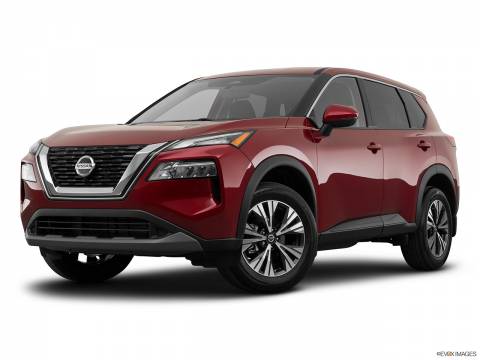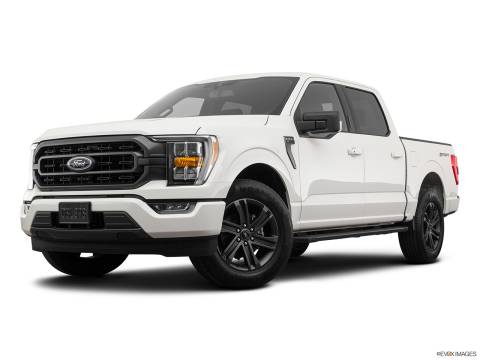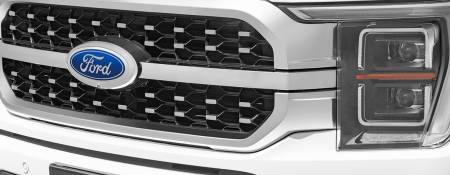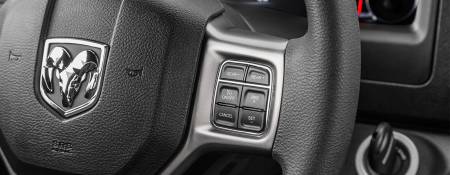Did you know that 70 percent of Canadians prefer leasing cars instead of purchasing them? They do so for a variety of reasons. These include the inherent flexibility that comes with leasing a vehicle.
But leasing also mitigates risks associated with new vehicles that don't end up performing as well or holding up as long as they should. No one wants to be left holding the bag when it comes to mechanical failures.
What's more, car leasing can prove far more economical than purchasing a new vehicle. In fact, many consumers prove serial car leasers and with good reason.
That said, situations arise where you need to get out of a car lease. But this can prove detrimental to your credit. So, how do you go about a car leas transfer without crippling yourself financially for years to come?
Read on for the skinny on car lease swapping and other options for getting out of a lease agreement early.
Transfer Car Lease 101
When a car is subject to an auto lease and the driver would like to transfer ownership to another individual, this is known as a car lease swap. With the transfer of lease, the new owner takes on the lease and original terms you received.
You no longer have to worry about making monthly payments on the vehicle. The person that you transfer your car lease to will continue to make payments in your place for the duration of the original agreement.
This new individual also should ensure that they return the vehicle that was leased in satisfactory condition to the car dealer. As you can see, there are some important variables in this type of agreement.

BMWs are among the most popular vehicles among new car lease programs and transfer websites.
What are some reasons to consider transferring a car lease? They vary from wanting a different vehicle to changing family situations and other financial scenarios that make continuing the lease a hardship.
If you find yourself in one of these circumstances, you don't have to suffer with a car that no longer suits your needs. A vehicle lease swap gives you flexibility. But how does one work?
First Steps in a Car Leasing Swap
Where do you start if you're thinking about a lease transfer? Begin by speaking with your financial agency to find out what your options are. Not every lease agency allows car swaps, so find out for sure before taking any other steps in the process.
Besides finding out whether or not a transfer is possible, you should also ask about associated fees. These include fees for administration. While you might assume they shouldn't cost very much, don't be surprised if they're a few hundred dollars.
Once you've got the details on whether or not a car lease swap is possible, then it's time to look for a potential person to take over your lease. The best way to do this is through word of mouth or by locating a family member or friend who's willing.
That said, not everybody proves this lucky. Your next best bet is to take out an advertisement in a local newspaper or on the internet.
Car Leasing Swap Websites
Fortunately, some sites specialize in lease swaps. These represent a priceless resource when it comes to finding the right person to take over your car's lease.
How do these sites work? They actively match those looking for car deals with individuals hoping to transfer a car lease. The best sites also provide resources and tools to help you better understand the costs associated with a specific transfer.
What happens once you've located someone to take over your lease? Then, it's time to connect them with the finance company that holds your car lease. They'll run a quick credit check to make sure this person has a high enough score for a swap.
Once your finance company, you, and the person assuming your lease all feel comfortable with the transaction, you'll sign paperwork to make it official.
In the transfer paperwork, there should be a stipulation that the new driver registers the vehicle and gets new license plates.
Why Someone Would Want to Take Over Your Lease
At this point, you may be wondering why there are so many people out there willing to do a car lease swap. There are many advantages to this type of transaction.
First and foremost, the individual who takes over your car lease is probably looking for something more affordable than a brand new car. They may also be looking for cheap deals from sellers who get desperate to get out of a lease agreement.
Leased vehicles also tend to be well-maintained and don't have many miles on them. Remember, these are both essential parts of a lease agreement.
Other advantages include the ability to make a short-term commitment. So, if you have a car lease that's now short-term, make sure you state this to potential buyers. Rather than a liability, this could motivate someone to make the swap.
It's also important to understand some of the reasons an individual might shy away from this type of arrangement. While they stand to save money over a new car purchase, transferring a lease comes with limited savings compared to a new lease.
It can also be difficult for potential swappers to find cars with low enough mileage to make the transfer beneficial.
Car lease swappers may also fear finding out that the vehicle has mechanical issues or other damage that they weren't able to detect on first sight. Finally, they may not feel enthusiastic about paying transfer taxes.
How can you amplify the benefits to a potential buyer and assuage their fears? Let's dive into best practices when it comes to maintaining a vehicle.
Mileage: A Factor That Could Impact a Lease Swap
What are some things that you need to keep in mind when it comes to a lease transfer?
Check your current mileage. When an individual assumes your lease, the last thing they want to do is exceed the mileage stipulated in the original agreement.
Know what your mileage is so that you can reassure the new person that there won't be any problems associated with a transfer.
Besides knowing what your current mileage is and what's permitted in the agreement, you also need to know what charges look like for mileage above this limit. Normally, there is a low fee for each mile beyond the lease.
The average? Usually $0.11 per mile. But even though this fee is low, it can quickly add up.
Ideally, you'll have kept your mileage low so that anyone that you transfer the lease to won't need to worry about exceeding this cap.
Car Condition and Lease Transfers
Another factor that could keep an individual from wanting to take on your lease? The condition of the car. Remember that this car will eventually be returned to the car dealer.
The last thing you want is a damaged interior or exterior. The individual who is considering taking over your car will most likely look over your vehicle very carefully. What's more, you should disclose any issues with the vehicle upfront.
When it comes to a car lease, you're supposed to return the car in reasonable condition. How this is defined varies by car dealers. Make sure you understand the quality they expect for a return and convey this information to the new leaseholder.
You should also have your car checked out by a mechanic to demonstrate that there are no underlying mechanical issues. And don't try to hide important information about the vehicle such as its involvement in a car accident.
Today's consumers are savvier than ever, and they've got the internet at their fingertips. Assume they'll go to Autocheck.com or Carfax.com. Disclosing this information is better from you than one of these sites.
If you're thinking about a car lease transfer, you should also make sure that you get your vehicle serviced regularly. And you should have the documents to prove this.
Failure to maintain your leased vehicle can lead to invalidating the car's warranty. It can also cause problems with the original lease agreement.
Again, potential buyers will be careful when it comes to the history of maintenance on your vehicle. Make sure you've kept your car in good working order while leasing it.
Other Costs Associated with a Car Lease Transfer
A party interested in taking over your car's lease might also ask you about the expenses associated with your vehicle. They might want to know how fuel-efficient it is and what fees look like to fill your tank.
They may prove interested in other expenses such as how much tax lease transfers cost. This varies from region to region, so do a little research before speaking to potential swappers.
Or, go with a great car lease transfer site that provides resources about all of these expense variables.
Besides concerns with taxes and hidden fees, a potential car lease swapper may worry about how much it'll cost to insure the vehicle. After all, most finance companies require the leaseholder to keep a minimum amount of insurance.
Call your finance company and discuss these insurance minimums with them. That way, when you have a potential new leaseholder, you'll be able to answer their questions about insurance expenses associated with the vehicle.
In general, finance companies require comprehensive and collision coverage. This usually means a maximum deduction of $500.
That said, find out if your finance company requires a leaseholder to keep personal liability coverage, too. If so, then, this means a minimum of $300,000 per accident, $100,000 per person, and $50,000 if property also gets damaged.
If you can answer these questions for potential lease swappers, then they'll feel more comfortable deciding on your vehicle.
More Options for Getting Out of a Car Lease Without Damaging Your Credit
At this point, you may be wondering if lease transfer remains your only option when it comes to getting out of a vehicle lease. The short answer is "no." You have other options available that don't involve hurting your credit score.
That said, you may not be in a financial situation to avail yourself of these options.
First, you have the option of buying, selling, or trading your vehicle. Take a closer look at your lease agreement. More than likely, there's a clause allowing you to purchase the car for a designated buyout price at any time.
If you're simply in the market for a new car and have cash saved up, this proves your easiest and simplest way to get out of a lease agreement.
Then, you can either turn around and sell the vehicle privately or trade it into a dealership. You can also approach a car dealership to see whether or not they're willing to purchase the car from you for wholesale price.
But here's the caveat. You'll still be responsible for early termination fees when it comes to your lease agreement.
You can also enter into a new car lease with the same dealer. Negotiate with the dealership so that they roll over your outstanding fees into the new lease and drop early termination fees.
Here's another option that's not nearly as attractive but might prove necessary to save your credit. You may need to give the car back and bite the bullet when it comes to paying any penalties that you've incurred.
To make the difficult decision, calculate what you'll stand to pay for this vehicle if you continue with your lease agreement through its full duration. Now, compare it to all of the fees that you'll pay if you return it early.
When a Car Lease Transfer Remains Your Best Option
As you can see, you've got a variety of options when it comes to getting out from under a lease agreement that no longer suits your current driving needs. That said, in most cases, a car lease transfer represents your best option.
Of course, you'll have to consider other variables, too, such as the condition of your vehicle, its mileage, and how well you've maintained it. If you've been negligent in these areas, then finding someone to transfer a lease to may prove difficult.
Are you interested in a lease transfer for your current vehicle? Continue reading to find out more about lease takeover fees.



























